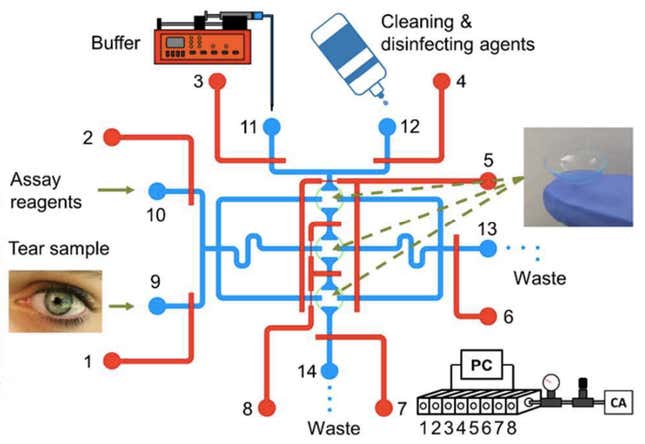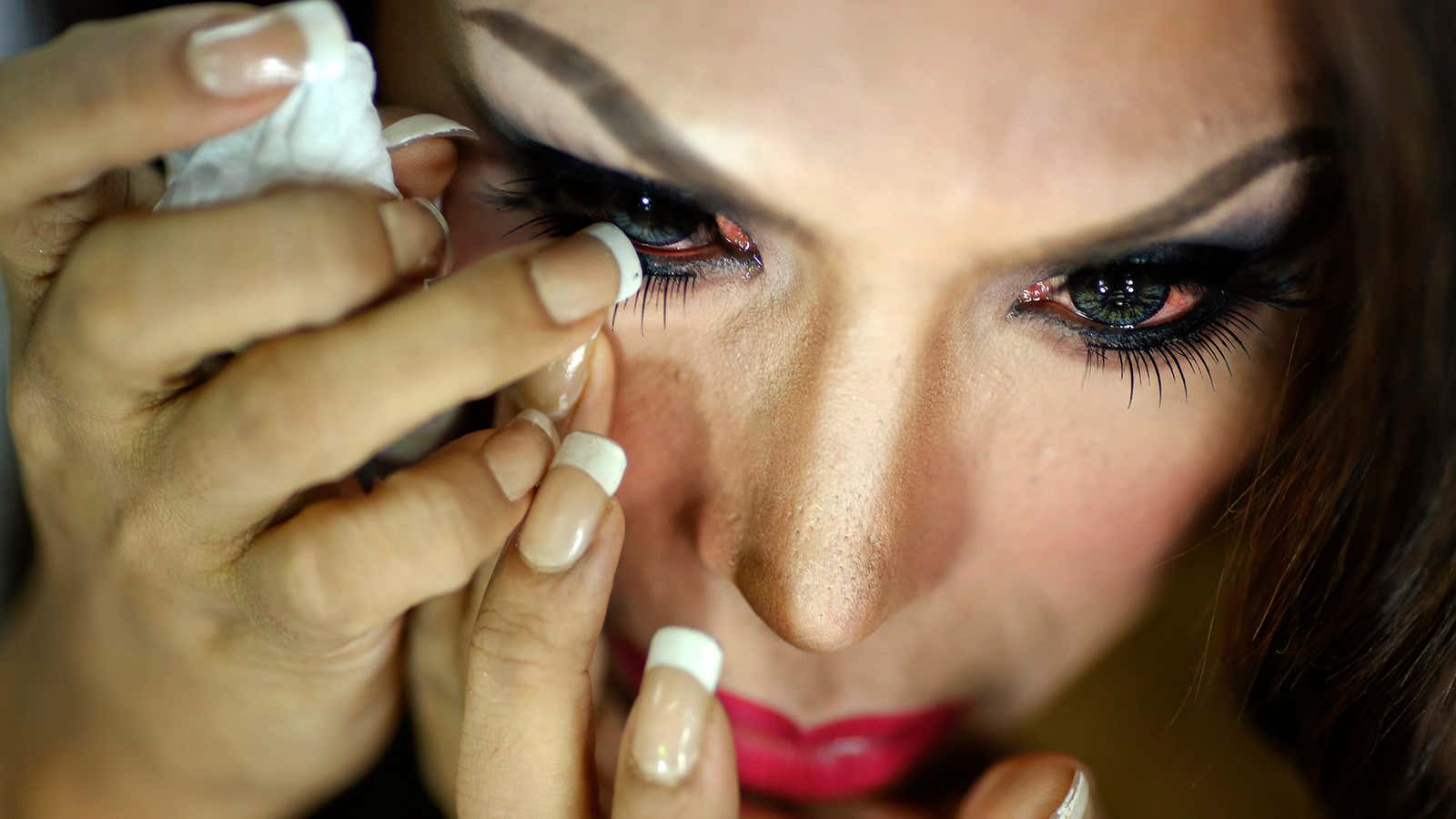Contact lenses are a remarkable invention—one in ten people in the US use them, ditching their glasses and yet still achieving good vision. But contact lenses also come with problems. Ever year more than 60,000 contact-lens wearers in the US contract serious eye infections that, at worst, can lead to blindness.
The most common cause of infections is poor cleaning of contact lenses—proteins build up on the lens and make for an excellent breeding ground for harmful bacteria. But even with proper cleaning, some bacteria can remain. Most cleaning solutions are only able to eradicate 50% of the proteins that build up on lenses, leaving users exposed to the risk of infection.
A tiny new device hopes to eliminate many of these infections. Every wearer produces different amounts of proteins on their lenses, which can be easily analyzed. As reported in the journal Lab on a Chip, researchers from the US Food and Drug Administration (FDA) and George Washington University have built a device—barely bigger than a quarter coin—to recommend personalized cleaning solutions based on the chemistry of tears.

The microfluidic device takes a single tear and a used lens from a user and runs them through a battery of tests to find the best cleaning solution specifically tailored to a person’s unique body chemistry.
The results from these tests will help opticians recommend a cleaning solution that contains, say, a greater concentration of hydrogen peroxide if a person’s ocular secretions tend to produce more proteins. Currently, it can test only three types of cleaning solutions at one time, so the process takes many hours. In its next iteration, the researchers to expand the number of simultaneous tests to 10 and thereby reduce the time it takes to run the test.
If they are successful in commercializing the technology, don’t be surprised if your optician asks you to shed a tear for science.
